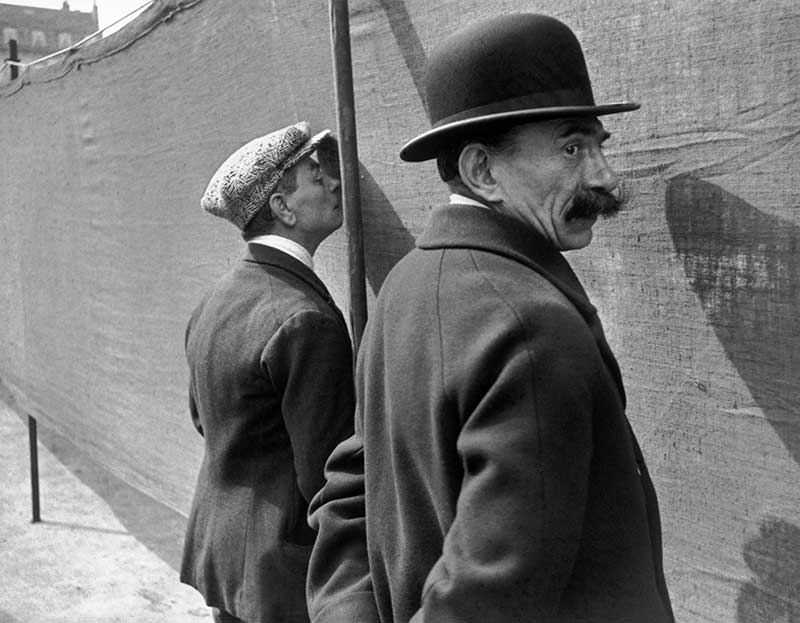by Andrea Rosen, Curator of Under the Surface.
Intrigue in a photograph can be created by alluding to a space or object that is hidden from the viewer. In Henri Cartier-Bresson’s Brussels, 1932, a rough-spun cloth blocks the sight of some unknown spectacle. One man has found a gap to peek through, but the other furtively gazes to one side, as if he has been caught in the act, or is acting the lookout. What scene has caused such a sense of guilt? Both the photographer and the viewer can sympathize with this clandestine curiosity. This image was one of the first that Cartier-Bresson took with a small-format Leica camera, which allowed him to operate undetected by his subjects.
Image details:
Henri Cartier-Bresson (French, 1908–2004)
Brussels, 1932
gelatin silver print
International Center of Photography, Gift of Henri Cartier-Bresson, in memory of Robert Capa and David Seymour
© Henri Cartier-Bresson/Magnum Photos
